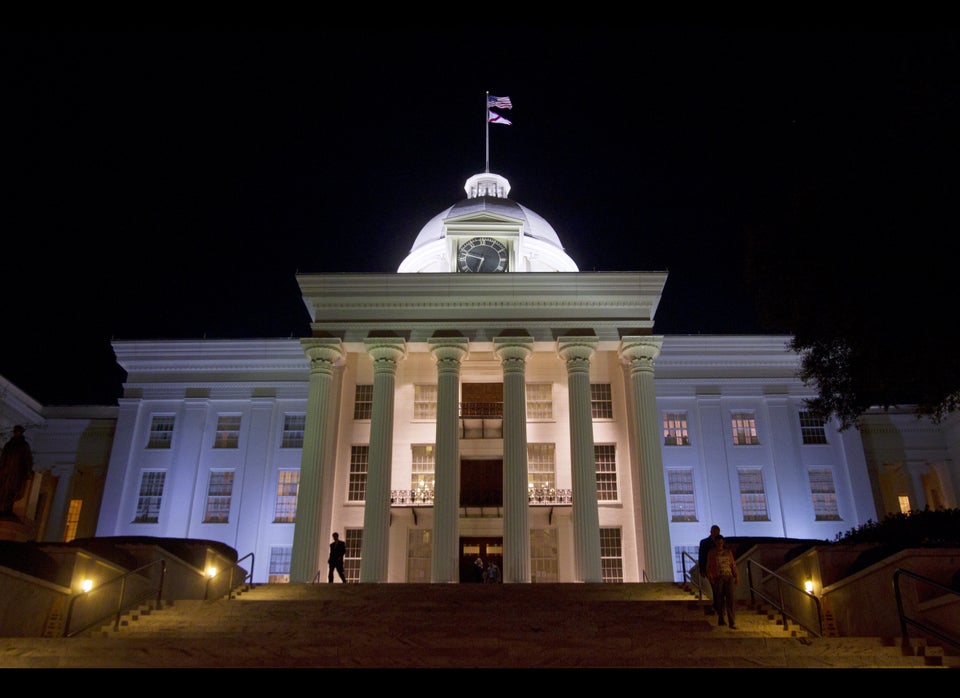When it came time for Maryland lawmakers to redraw the state’s congressional map in 2011, then-Gov. Martin O’Malley (D) felt he had an obligation to come up with a redistricting plan that gave his fellow Democrats the best possible chance of winning as many seats as possible.
There wasn’t anything particularly controversial about O’Malley’s position back then. Courts have never said it’s illegal to draw electoral boundaries to benefit a political party, and a Republican governor would likely have done the same for his side.
O’Malley and a redistricting advisory commission drew up a plan, and the state legislature passed it. The new map gave Democrats one additional expected seat ― the 6th Congressional District. The change increased Democrats’ advantage over Republicans in the U.S. House delegation from 6-2 to 7-1.
On Wednesday, the Supreme Court will hear a challenge from Republican voters in the 6th District who say state officials violated the U.S. Constitution in redefining the district’s borders. The plaintiffs argue that by drawing the boundaries based in part on political data, Democrats essentially punished voters for their past support of GOP candidates, violating their First Amendment rights.
This case, Benisek v. Lamone, and another from Wisconsin are being watched across the country because they give the Supreme Court the chance to set limits, for the first time, on when partisan gerrymandering goes too far. Such a standard has the potential to reshape American politics by forcing states to draw districts that are more competitive.
In October, the Supreme Court heard argument in Gill v. Whitford, which was brought by Democrats challenging Wisconsin’s GOP-drawn state legislative map. They contend it violates the Constitution’s equal protection clause and the guarantee of freedom of association.
The Maryland case is different from the Wisconsin one in a few key ways. While the Wisconsin lawsuit challenges an entire map, the Maryland suit seeks to redraw just one district (though obviously that would affect other districts). The Maryland case is being brought by Republicans, who were the main beneficiaries of congressional gerrymandering after the 2010 Census. And the Maryland plaintiffs are advancing the novel legal idea that partisan gerrymandering amounts to an unconstitutional retaliation based on voters’ past choices.
A district is unconstitutional, they contend, when officials take voters’ past support for candidates into account and draw a map in such a way that dilutes their votes with no justification other than partisan gain. Richard Pildes, an election law expert and professor at New York University, wrote in a blog post that the plaintiffs were suggesting a way to evaluate partisan gerrymandering claims that is similar to the way the Supreme Court already looks at claims of race-based gerrymandering ― an area of law the court is active in.
Maryland’s lawyers responded in their brief to the Supreme Court that the plaintiffs were offering an unworkable standard that would make any district that gave either party an edge susceptible to a lawsuit from a voter in the losing party. They said the standard fails to clarify to what degree lawmakers can take politics into account when drawing electoral boundaries. They said that the 6th District ― which stretches from Montgomery County, just outside of Washington, in the east to more rural parts of the state in the west ― joins together communities of interest along I-270. And they noted that elections there remain competitive even if a Democrat has represented the area since the new map was put in place.
Both sides are targeting their arguments at Justice Anthony Kennedy, who is seen as the key swing vote in the case. In a 5-4 ruling in 2004, the Supreme Court declined to strike down Pennsylvania’s congressional map as an unconstitutional partisan gerrymander. Four of the justices said there was no way for courts to evaluate that claim, but Kennedy, writing separately, said that such a standard may exist.
The Maryland case could offer the court a more palatable way to set a legal standard for partisan gerrymandering. During oral arguments in the Wisconsin dispute, Chief Justice John Roberts dismissed a statistical method those plaintiffs offered for evaluating the unfairness of a gerrymander as ”gobbledygook.”
Roberts also worried aloud that assessing partisan gerrymandering would diminish the credibility of the courts because people would see them as biased every time they ruled in favor of Democrats or Republicans. By taking the Republican challenge from Maryland and the Democratic one from Wisconsin, the justices could be trying to defend themselves against such accusations.
Still, the Supreme Court’s decision to hear the Maryland case when the Wisconsin one was already teed up was somewhat of a surprise. Michael Li, redistricting counsel at the Brennan Center for Justice, said partisan gerrymandering must be weighing on the justices’ minds.
“Taking these two cases, it’s clear that the Supreme Court wants to say something about partisan gerrymandering. We don’t quite know what that is yet, but it wants to say something about it,” he told reporters last week. “If it wanted to walk away from the issue, it wouldn’t have had to take a second case to walk away from the issue.”

